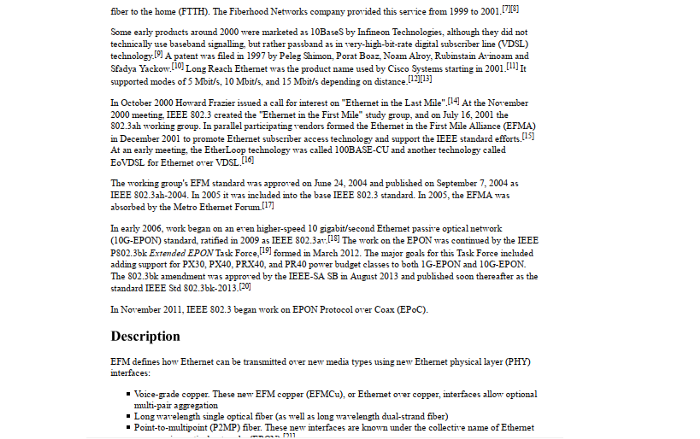So, yesterday’s installment of “40 Days” was heavyweight tech talk, right? This author may have gotten lost and tangled a time or two just thinking about MiVu, Lucent Technologies, SBC Communications, Apple Computer, the New AT&T, Internet Networks which is the technical term behind the word “cloud.”
Did you know the term “cloud” is not actually a new term in the tech industry? I didn’t.
The image of a cloud has always been used in technical diagrams to indicate the “Internet.” When a scaled down version of the MiVu Internet Network was repurposed for enterprise use, rather than referring to the tiny version as Internet Network, the technical reference term, used to describe the image that is used to technically represent the Internet, was then adopted. Did you get that? I may have to read that one again.
Common Cloud Computing diagram, 1Q/2021
When this author compares this commonly used “cloud computing” diagram in use today with the contents of Padraic McFreen’s MiVu executive summary pages and yesterday’s deep dive of tech innovated and designed over two decades ago, would you agree with me when I have to ask the question, “MiVu, where have you been all my life?”
As we’re taking this journey, you and I are learning together. What’s clear to this author just four installments in, MiVu has been right here with us all along.
Let’s get to it, shall we?
Padraic McFreen’s startup, MiVu, broke every rule in every book about Ethernet networks, the then nascent Java code, the almost abandoned Sun Microsystems Internet servers, the nascent Microsoft IPTV software, Directing Data within an Internet Protocol Network (no, that one was an innovation), physical capital and labor intensive telecommunications networks, Data Aggregation, Data Encapsulation and Data Distribution as consumable content (no, those were all innovations too), Content Aggregation (no, innovation), Content Distribution (no, innovation), giving the once abandoned and forgotten Last Mile of a legacy telecommunications network value by turning everything on its head to make the once least important link in the chain, the most important with his Last Mile Single Point Access (innovation too).
Well, you get the point of today’s installment. Padraic McFreen innovated MiVu relying completely on his intellect, vision and creativity. Padraic McFreen broke the telecommunications industry. And we’ll see in later installments exactly how far reaching and disruptive MiVu actually was/is to legacy industries.
This author will discuss how he settled on the name, MiVu, for the startup as well as what personal and professional experiences he drew from in the idea development, design and implementation of MiVu.
What exactly did the telecommunications industry players, Lucent Technologies and Bell Labs, actually bring to the table when Padraic McFreen walked in the door with MiVu? We’ve already read it previously, arrogance.
That’s not a bad thing either. Bell Labs brought decades of innovation and invention — once noted as “the Genius Lab started by Alexander Graham Bell” — the Alexander Graham Bell. Padraic McFreen was definitely among like-minded thinkers. But, the question still remains.
If someone walked into my office right this moment and said “I want to hire you to write a novel — oh and I will need you to write it using this new set of tools I just invented and designed and you’ll use several new paradigms I created that heretofore have never been seen or imagined,” I’d respond with “you’re never going to get a novel completed taking that path forward.” It’s a natural response.
Padraic McFreen made the claims and backed those claims with proof.
You just have to admire him for the courage and fortitude to push through resistance and challenge the status quo. Can you imagine trying to convince industry leaders to change — abandon what they’ve done for better than a century in some instances — and head out into uncharted territory.
Everything the Bell Labs experts thought they knew about their own business and all things telecom, radio and radio base stations, microwave and fiber, became obsolete overnight.
Padraic McFreen notes that during one of the large engineering meetings in early October 2000, which involved briefing more senior thinkers within Lucent Technologies and Bell Labs on the 21st Century Access Network relying on Ethernet technology connecting at the last mile of an existing telecommunications network, one of the leaders politely stepped away from the briefing and made a call to a Bell Labs external consultant, who in turn, frantically requested that IEEE issue a Request For Interest in exploring this new idea, Ethernet In The Last Mile, the MiVu 21st Century Access Network.
The innovation was so monumental, IEEE made sure to record the events of that morning for prosperity’s sake. Worth noting, Bell Labs’ leadership did not want the IEEE membership to conclude “wholesale use” of Padraic McFreen’s technology without modifications, so they advocated to change the term “last” to the term “first.” Bell Labs changed a word?
The changing of the term last to the term first was the only change made to Padraic McFreen’s startup, MiVu’s technology. Wow! He wasn’t an industry outsider, because his industry didn’t exist until the moment he invented it.
Noteworthy, “Last Mile” has been a telecommunications term of art for several decades up to that point. Bell Labs believed the change in terms was allowed due to the fact MiVu had redefined the entire industry.
Lucent Technologies and Bell Labs Disclose Padraic McFreen’s MiVu to industry, October 2000
Keep in mind, Padraic McFreen’s startup launched in September of 2000. Here he is briefing Bell Labs in early October 2000 and Bell Labs is taking it serious — so serious it issues a request for interest and in that moment set in motion the creation of the Internet Industry valued today at approximately $11 Trillion USD.
Padraic McFreen, that is absolutely not bad for a startup from Kansas and not Silicon Valley. This author has nothing against Silicon Valley, but you just have to take a moment and let the idea soak in: the most important start up of the 21st Century launched in Kansas. Now that’s some mighty fine wheat.
It is absolutely worth noting at this time, Lucent Technologies and Bell Labs didn’t stop at briefing the industry using IEEE, these guys made changes — big changes almost immediately.
Armed with MiVu technology, Lucent Technologies abandoned its entire global business model of “the telecommunications network equipment company” to become “the Internet Network company.” Bell Labs became the resident experts on all things Internet Protocol.
AT&T as SBC Communications or is it the other way round? Anyway, they abandoned their legacy infrastructure as a telecommunications company to become an Internet Network Company — an entertainment and information network company.
Ever subscribe to U-verse? Did you ever wonder where the heck they came up with the name U-verse? I know I did.
Well my dear reader, now you know. U-verse is Padraic McFreen’s Multiservice internet Virtual Universe. Not to worry, we’ll delve deep into all of the networks — yes, even your favorite ones too.
Apple Computer, Inc., at the urging of Lucent Technologies and SBC Communications (AT&T), abandoned the term “computer” in its name and became an Internet Network Device Company. It’s good thing Apple leadership listened, because before MiVu Apple was just about out of business.
Can someone say MiVu saved tech? Do I have to say it? You see the trends here, right? You are seeing a pattern develop here, I am sure.
Recapping just a smidge, Goliath size corporations unavoidably speeding towards zero as fast as they can with no hope in sight, and with a “Big Bang,” “let there be light” at the end of the tunnel. This time, it’s not a train, it’s the Genius of Padraic McFreen — the sole founder of the never before heard of 21st Century Access Network, MiVu.
Padraic McFreen gave me permission to add a few more pages of his executive summaries. There’s a goody in there too: Activision. I have it on very good authority that MiVu and Activision were just moments away of signing a gaming exclusivity agreement, but something came up at the Activision office which delayed the signing of the agreement. Imagine.



